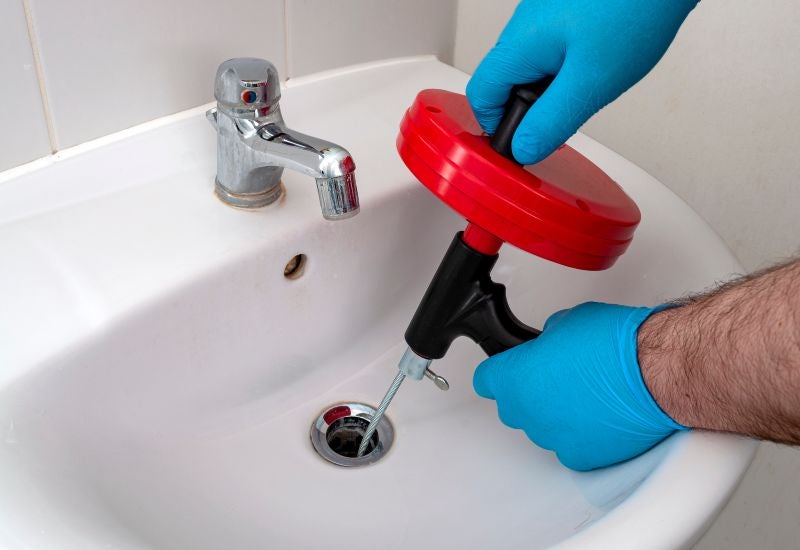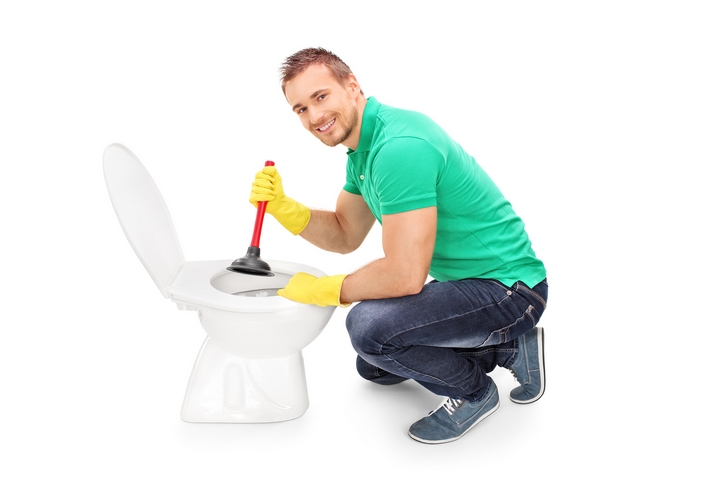The article in the next paragraphs relating to A Guide to Plungers (and How to Use Them) is unquestionably stimulating. Check it out yourself and decide what you think of it.

Introduction
Proper upkeep of home drains is crucial for stopping blockages and making certain smooth water flow. One of the key devices in every property owner's toolkit is the bettor, together with different drainpipe cleaners developed to take on stubborn blockages properly. This article checks out just how to use bettors and drainpipe cleaners effectively to keep your drains pipes streaming easily.
Area 1: Comprehending Bettors
Sorts of Plungers
There are a number of sorts of bettors readily available, each created for various types of drains and obstructs. The most typical types consist of cup plungers, flange bettors, and accordion plungers.
How Plungers Work
Bettors deal with the concept of producing stress and suction to remove blockages. When properly used over a drainpipe, they produce a vacuum cleaner that can pull out particles or break up obstructions.
Selecting the Right Bettor
Picking the ideal bettor depends on the type of drainpipe and the nature of the obstruction. Mug plungers are excellent for sinks and tubs, while flange bettors are better fit for commodes due to their layout.
Common Errors with Bettors
Staying clear of these mistakes guarantees efficient plunging: inappropriate seal around the drainpipe, insufficient force, and not clearing bordering debris.
Section 2: Utilizing Plungers Successfully
Prep work
Before plunging, guarantee the plunger covers the drain completely and forms a limited seal. Clear any kind of visible particles around the drain opening.
Method
Start with mild plunging movements to build suction. Increase pressure slowly, using a consistent rhythm. Repeat as needed till the drainpipe removes.
Fixing Tips
If diving does not work, try readjusting the seal, using petroleum jelly for a better seal, or using a various type of bettor.
Area 3: Comprehending Drainpipe Cleaners
Sorts Of Drain Cleansers
Drain pipes cleansers can be chemical or enzymatic. Chemical cleaners utilize solid chemicals to liquify clogs, while enzymatic cleaners utilize all-natural enzymes to break down raw material.
Just How Drain Cleaners Work
Chemical cleaners react with blockages to dissolve them, while enzymatic cleaners break down organic materials like hair and grease without harming pipes.
Safety Factors to consider
Constantly put on handwear covers and eye defense when making use of chemical drainpipe cleaners. Guarantee adequate air flow and adhere to maker directions thoroughly.
Eco-Friendly Alternatives
Consider making use of vinegar and cooking soda or enzyme-based cleansers for green alternatives that are much safer for pipes and the environment.
Area 4: Making Use Of Drainpipe Cleansers Successfully
Application Techniques
Pour chemical cleansers directly into the drainpipe opening. Allow them to benefit the advised time prior to flushing with hot water. Enzymatic cleansers ought to rest over night.
Safety measures
Stay clear of mixing different sorts of cleansers, as this can produce hazardous fumes. Never ever make use of chemical cleaners together with a bettor, as spilling can take place.
Handling Stubborn Clogs
For persistent clogs, think about utilizing a pipes snake or calling an expert plumbing technician to avoid damage to pipes.
Conclusion
In conclusion, recognizing just how to utilize plungers and drain cleansers successfully is crucial for preserving healthy pipes systems. By selecting the right tools and strategies, property owners can tackle small clogs and protect against major pipes issues down the line.
How to Use a Plunger to Unclog a Drain
The humble plunger is a simple yet effective tool for breaking clogs in sinks, tubs and toilets. This handy tool is easy to use. You can make the most of its power if you understand how it works. Ready to dive in? Here’s what you need to know.
Safety First!
Never use a plunger with drain chemicals. Water will splash as you work, and the chemicals can spatter, burning skin and eyes. It’s a good idea to use rubber gloves and wear safety goggles when you work on a clog.
Choose the Right Tool for the Job
Plungers come in two different styles. Sinks, bathtubs and showers require a cup plunger. Like its name suggests, the rubber end is shaped like a cup. Use a flange plunger on toilets. These plungers have a rubber funnel extending from the cup. A plunger needs to be big enough to cover the drain.
Ready, Set, Plunge!
Coat the rim: Coat the plunger rim with petroleum jelly. This helps make a better seal.
Block outlets: Hold a wet rag over nearby outlets such as the overflow vent or the drain in a second sink.
Release air: Insert the plunger at an angle into the water. Water will displace air in the cup. A water-filled cup is more forceful than one filled with air.
Keep the plunger upright: Hold the plunger perpendicular to the drain. Use fast, forceful strokes, but make the first stroke gentle. The first stroke can create a splash if the cup still contains air. Thrust the plunger 15 to 20 times.
Snap off the plunger: The final stroke should be a strong upward motion that ends when the plunger snaps off the drain.
Repeat the process: you may need to repeat this sequence several times. When the water drains away, your work is done. High-five! https://plumbernw.com/blog/how-to-use-a-plunger-to-unclog-a-drain/

Application Techniques
Pour chemical cleansers directly into the drainpipe opening. Allow them to benefit the advised time prior to flushing with hot water. Enzymatic cleansers ought to rest over night.
Safety measures
Stay clear of mixing different sorts of cleansers, as this can produce hazardous fumes. Never ever make use of chemical cleaners together with a bettor, as spilling can take place.
Handling Stubborn Clogs
For persistent clogs, think about utilizing a pipes snake or calling an expert plumbing technician to avoid damage to pipes.
Conclusion
In conclusion, recognizing just how to utilize plungers and drain cleansers successfully is crucial for preserving healthy pipes systems. By selecting the right tools and strategies, property owners can tackle small clogs and protect against major pipes issues down the line.
How to Use a Plunger to Unclog a Drain
The humble plunger is a simple yet effective tool for breaking clogs in sinks, tubs and toilets. This handy tool is easy to use. You can make the most of its power if you understand how it works. Ready to dive in? Here’s what you need to know.
Safety First!
Never use a plunger with drain chemicals. Water will splash as you work, and the chemicals can spatter, burning skin and eyes. It’s a good idea to use rubber gloves and wear safety goggles when you work on a clog.
Choose the Right Tool for the Job
Plungers come in two different styles. Sinks, bathtubs and showers require a cup plunger. Like its name suggests, the rubber end is shaped like a cup. Use a flange plunger on toilets. These plungers have a rubber funnel extending from the cup. A plunger needs to be big enough to cover the drain.
Ready, Set, Plunge!
Coat the rim: Coat the plunger rim with petroleum jelly. This helps make a better seal. Block outlets: Hold a wet rag over nearby outlets such as the overflow vent or the drain in a second sink. Release air: Insert the plunger at an angle into the water. Water will displace air in the cup. A water-filled cup is more forceful than one filled with air. Keep the plunger upright: Hold the plunger perpendicular to the drain. Use fast, forceful strokes, but make the first stroke gentle. The first stroke can create a splash if the cup still contains air. Thrust the plunger 15 to 20 times. Snap off the plunger: The final stroke should be a strong upward motion that ends when the plunger snaps off the drain. Repeat the process: you may need to repeat this sequence several times. When the water drains away, your work is done. High-five! https://plumbernw.com/blog/how-to-use-a-plunger-to-unclog-a-drain/

We hope you enjoyed our topic about Here's How to Correctly Use a Toilet Plunger. Thank you for finding the time to browse our piece. Are you aware of another person who is looking into the topic? Please feel free to promote it. Thank-you for taking the time to read it.
Pricing